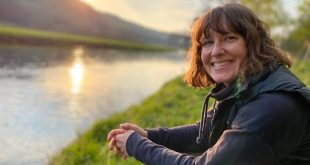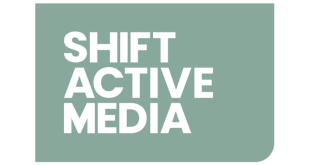Exclusive extract from Chris Boardman’s autobiography, Triumphs and Turbulence, by Ebury Press.
Long and rambling, with little punctuation, the message that landed in my inbox in late 2004 had the hallmarks of a nutter email. The sender was Alan Ingarfield, a former triathlete who’d held the British Ironman record, and the gist of his proposal was to start a company together to make bikes.
The initial finance was no problem: Alan’s partner, Sarah Mooney, was a successful businesswoman and keen to invest. Alan was just keen. I tentatively agreed to form a partnership.
From the start I’d told Alan that, in my view, Dimitris Katsanis was the best frame designer in the world and the only person I wanted to work with. But any collaboration between us had to be handled carefully, since we were both part of British Cycling’s Olympic R&D team. Neither of us was a full-time employee, so we were free to take on other work, but the potential for a conflict of interest was clear and I was keen that we were upfront with our BC colleagues.
We set about designing our first Boardman Bikes product: a carbon time trial/triathlon frame. The guiding principle was one we both held dear: the demands of the event would drive our design, and function would always take precedence over form. I’d seen so many gimmicks over the years and I was determined there would be none on a bike that carried my name. We would celebrate the simple beauty of functionality. It took a year before we were satisfied. Armed with our blueprints, Alan toured the Far East and eventually found a suitable manufacturing partner: a factory both big enough to have all the required skills and small enough to be passionate about our start-up venture, an operation with a conscientious staff we knew we could rely on. It was a long haul, but by mid 2006 we’d established what we wanted to make and the method by which it would be created. Now we just had to nail down a way to sell it.
In parallel with his Far East factory tours, Alan had been exploring all possible routes to market and attending dozens of meetings with retailers and distributors across the UK. The most promising response came from the biggest seller of bikes in the country, Halfords. Halfords’ CEO Ian McLeod was a brusque, no-nonsense Scot with a clear vision of how to improve his company’s fortunes. He wanted to expand their presence in the bike market further, adding quality to quantity along the way. But as a place known better for car parts, Halfords was largely scorned by the Lycra-wearing, leg-shaving community of ‘real’ cyclists. Consequently, the big bike manufacturers refused to deal with them for fear of damaging their image. And since Halford’s own-brand bikes didn’t have the credibility to draw in more discerning customers, they were stuck.
So when Alan had approached them for an exploratory meeting, the timing couldn’t have been better. If they weren’t able to get the elite manufacturers to deal with them, maybe they could strike a deal to grow their own? Over the following months, a strategic alliance was forged between the embryonic Boardman Bikes and Halfords. The contract would give the chain sole rights to sell our bikes in the UK and me the right to sign-off on every product that bore my name.
Our first offerings would be high-quality machines based on the principles we held dear, but with the initial emphasis on affordability rather than the last word in cutting-edge technology. For their part, Halfords were prepared to cut their profit margins to ensure that the bikes were class-leading, and so each was fitted out with equipment usually seen on machines twice the price.
In July 2007, just before the Tour de France got underway in London, Ian McLeod and I travelled down to the capital to announce both the new brand and the partnership. Being surrounded by walls covered with pictures of myself and products plastered with my name was uncomfortable and flattering in equal measure. I couldn’t get used to thinking of and referring to myself as a brand.
Over the following few months, the bikes were rated best-in-class in every magazine review. Like a fanatical bird watcher on the hunt for a new species, I scanned the traffic everywhere I went, waiting to get a glimpse of the first model in the wild. When I did, it was in London, as I walked down Woburn Place, not far from the British Museum. A genuine Boardman customer. ‘Nice bike,’ I remarked as nonchalantly as I could to the guy as he waited for the traffic lights to change. I think he thought I was trying to chat him up.
+++
Chris Boardman will be signing copies of Triumphs and Turbulence at:
8th June
12.30pm London Wall Waterstones – London Wall
7pm Waterstones Liverpool One – West Africa House, Liverpool
14th June
7pm Rossiter Books – Blake Theatre, Monmouth
15th June
1pm WHSmith Birmingham – Union Street, Birmingham
7.30pm Booka Bookshop – The Marches School, Oswestry
21st June
12.30pm Linghams Bookshop – Heswall, Wirral
7.00pm Silverwood Events – University of Central Lancashire, Preston
+++
Chris Boardman won a gold medal at the Olympics in 1992, and in 1994 became the first British rider since Tommy Simpson in 1967 to wear the race leader’s yellow jersey in the Tour de France. After he retired from racing he became the backroom guru behind British Cycling’s Olympic successes. He headed up the R&D team known as the Secret Squirrel Club, whose meticulous attention to detail and pioneering technical know-how was the crucial aspect of the team’s success at both the 2008 and 2012 Olympics. He also developed Boardman Bikes.
 BikeBiz Bicycle and cycling retail news
BikeBiz Bicycle and cycling retail news



